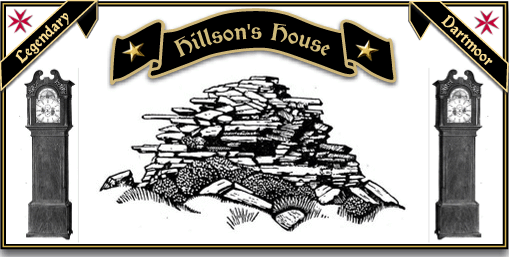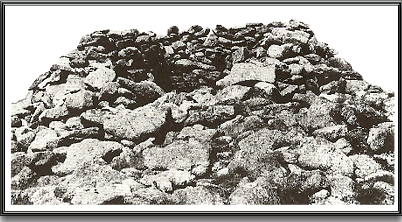
One day, a tiny baby boy was found abandoned on the bleak Staldon Barrow. Time has erased the name of the person who found him but he was taken back to safety and frantic efforts were made to find his parents. Sadly, nobody was forthcoming to claim the boy and the moorfolk became concerned that he would be taken into care. Luckily there was an old childless couple who took pity on the child and adopted him as there own. They gave him the name of ‘Hillson’, presumably from ‘son of the hill’, eluding to where he was found.
Time flew by and soon Hillson was a grown man, throughout his life he was a shy, solitary boy who preferred his own company. So it was no surprise that one day he took himself off the the hill where he was found and built himself a small house on its summit. The stone he used to build his abode was taken from the old ancient cairn which stood on the hill, the house of the dead became the house of the living.
Hillson had taught himself the intricacies of clock making and it was from this that he made his living by building eight-day clocks. Rumour has it that he was the first clock maker to introduce that type of clock into the Dartmoor area.
The passages of time have abandoned Hillson for nobody can remember how he finished his years, he was left in legend to build his clock on that ancient and remote hilltop.

Hillson’s House.
William Crossing 1990, p.402, relates this story and notes that in the late 1800’s, a man who lived at nearby Wakeham Rook is said to have owned one of the clockmakers eight-day clocks – his name was W. Hillson.
Hemery, 1983, pp.250-1, also reluctantly agrees that the house belonged to a watchmaker called Hillson. He bases his theory on the fact that there are still Hillsons living in the area and that nearby some enclosed lands are called ‘Hillson’s Brake’.
The original Bronze Age cairn is one of several associated with the Staldon stone row. Butler, 1993, p.61 describes the feature as being located at the highest point of the ridge. It has a circumference of approximately 65ft (20m) and a diameter of about 6.5ft (2m). Today the ‘house’ has 3 – 4ft (0.9 – 1.2m) of wall standing and measures 6.5ft (2m) x 8ft (2.5m), just about enough room for two people inside. Butler considers that the hut/house was originally that of a peat-cutter which would mean that either Hillson never existed or that he was a ‘man of the turves’. There are certainly peat ties (area’s where peat has been cut) in the area.
Bibliography.
Butler, J. 1993 Dartmoor Atlas of Antiquities, Vol. IV, Devon Books, Exeter.
Crossing, W. 1990 Crossing’s Guide to Dartmoor, Peninsula Press, Newton Abbot.
Hemery, E. 1983, High Dartmoor, Hale, London.
 Legendary Dartmoor The many aspects past and present of Dartmoor
Legendary Dartmoor The many aspects past and present of Dartmoor

One comment
Pingback: Harford circular walk on Dartmoor | Dartmoor Hiking